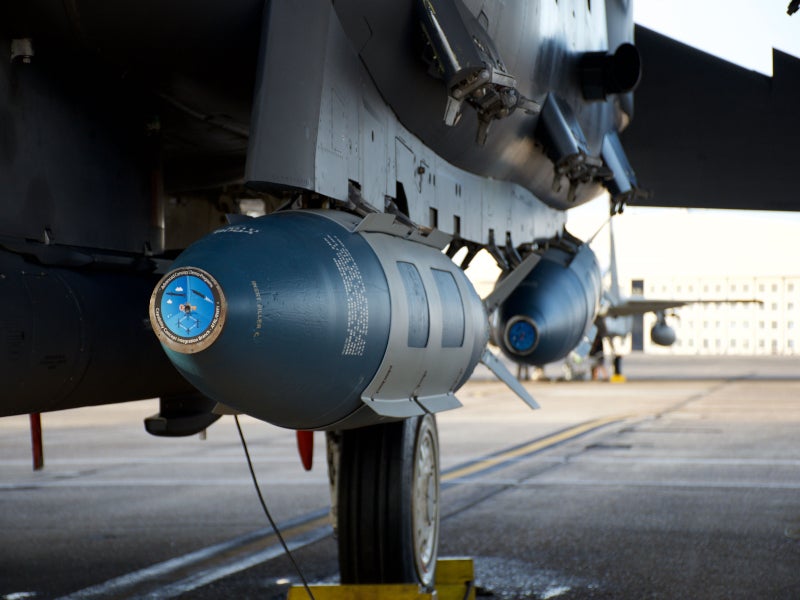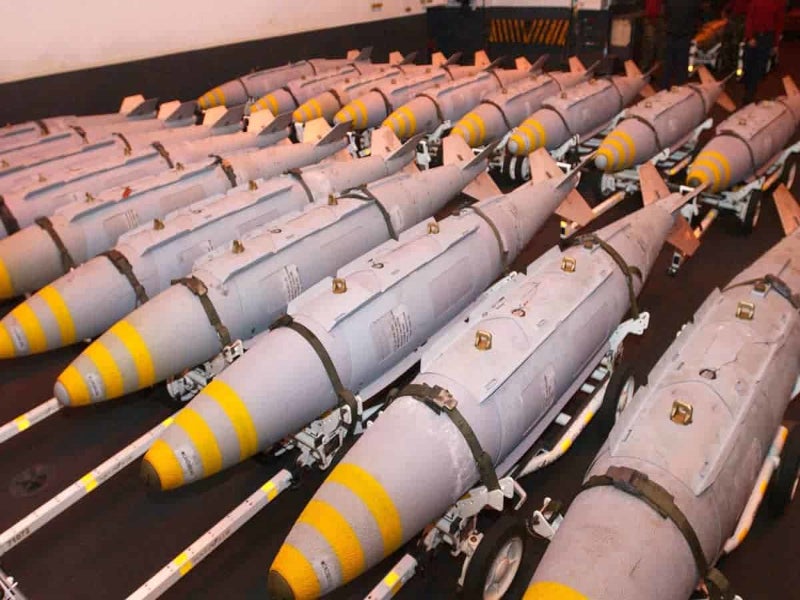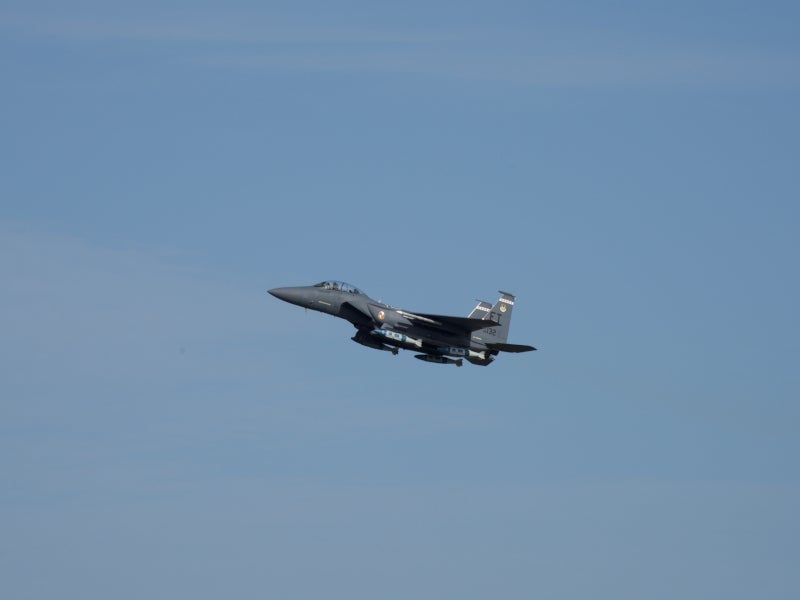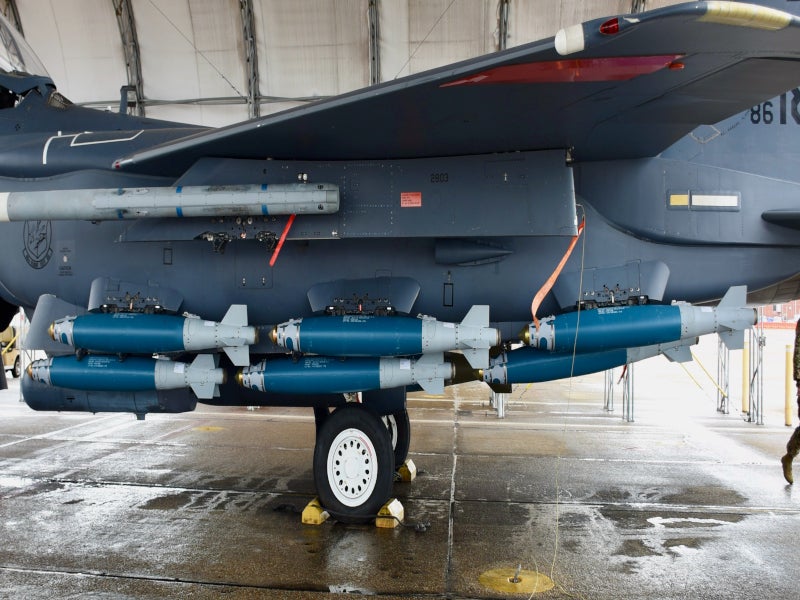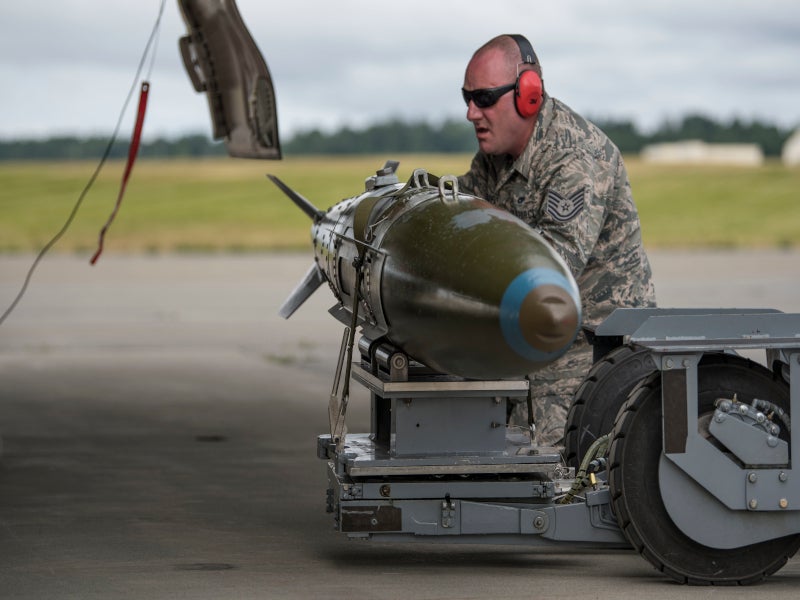Joint Direct Attack Munition-Extended Range (JDAM-ER) is the latest winged variant of the Joint Direct Attack Munition (JDAM) precision bomb guidance kit produced by Boeing.
JDAM kits, which have been in production since 1998, can transform unguided free-fall bombs into all-weather, precision-guided smart weapons. They are currently employed by the US Air Force (USAF), US Navy, and militaries of more than 26 other countries.
JDAM-ER was jointly developed by Boeing and Australia’s Defence Science and Technology Organisation (DSTO). It entered service with the Royal Australian Air Force (RAAF) in 2015.
The advanced bomb guidance kit incorporates a low-cost wing set to triple the stand-off range of JDAMs to more than 45 miles (72km).
Bloomberg reported in February 2023 that the US is providing JDAM-ER weapon systems to Ukraine, as part of its $1.85bn of additional military aid announced in December 2022.
Development of JDAM-ER
Research and development (R&D) began in 1992 on a precision-guided munition to improve the USAF’s air-to-surface weapon capability and accuracy in adverse weather conditions. The JDAM kits were first delivered in 1997, with operational testing conducted in 1998.
The munitions recorded a system reliability of 95% with a 9.6m accuracy rate during testing, which was carried out on more than 450 JDAMs. The USAF dropped over 600 JDAMs from B-2 bomber aircraft during Operation Allied Force, demonstrating enhanced air warfare capability with greater stealth and accuracy. The MK-82 500lb variant bombs subsequently began development within the JDAM family of weapons in late 1999.
The US Department of Defense (DoD) took a full-scale production decision for JDAM in 2021. In the same year, Boeing proposed DSTO to combine JDAM with the latter’s wing kit technology to create JDAM-ER. DSTO initiated a capability technology demonstrator (CTD) programme to demonstrate the capability of its wing kit technology to extend the range of the 500lb-class GBU-38 JDAM.
JDAM-ER was successfully tested at Woomera in Australia in 2006 and 2008, paving the way for the start of its production.
The Defence Materiel Organisation (DMO) of Australia partnered with DSTO and Boeing in 2009 for the production, final certification trials and procurement of JDAM-ER for the Royal RAAF.
JDAM-ER’s certification flight trials, in which the RAAF’s F/A-18 Hornet flew with two JDAM-ER 500lb bombs and two time-space-position-information pods, were successfully completed at Woomera in 2013
The JDAM-ER weapon system entered service with the RAAF in 2015. The addition of the DSTO wing kit significantly improved JDAM’s range, allowing the RAAF to engage long-range targets.
Design and features
JDAM is a low-cost, guided air-to-surface weapon installed with a tail control system and a global positioning system (GPS)-aided inertial navigation system (INS). The navigation system coordinates with the aircraft system to obtain position and velocity vectors, initiated by transfer alignment.
Target coordinates can be loaded into the aircraft before take-off and modified by the aircrew before releasing the weapon. Onboard aircraft sensors can also automatically designate the target location. The JDAM is designed to navigate autonomously to the designated target coordinates after its release from the aircraft.
The JDAM system can provide a weapon circular error probability (CEP) of 5m or less during free flight in its most accurate mode when GPS data is available. The system can, however, achieve a CEP of 30m or less for free flight times up to 100 seconds with a GPS-quality hand-off from the aircraft.
JDAM can be launched in dive, toss, loft, and straight-and-level flight modes, and delivered either on-axis or off-axis from very low to very high altitudes. This allows for the delivery of diverse weapons directed against single or multiple targets on a single pass.
Aircraft such as B-1B, B-2A, B-52H, AV-8B, F-15E, F/A-18C/D/E/F, F-16C/D and F-22 are currently capable of dropping JDAM bombs.
Laser JDAM and JDAM-ER
The Laser JDAM is a variant of JDAM with expanded capabilities. It has a modular design, which enables installation of a low-cost laser sensor kit on an existing JDAM in the field within a few minutes. Besides the all-weather GPS/INS capability, Laser JDAM can strike targeted opportunities, including mobile and naval ones.
Boeing delivered Laser JDAMs to the USAF in May 2008. The system is operational on the USAF’s F-15E and F-16 and the US Navy’s F/A-18 and A/V-8B platforms. It is also used by six other countries.
The 500lb JDAM-ER variant features a modular add-on wing kit, which utilises small diameter bomb glide technology. The wings unfold in flight and triple the range of the weapon from 15 miles (24km) to more than 45 miles (72km). The modular-design wing kit can be easily upgraded with improved technologies and other modular enhancements such as laser sensors and anti-jamming countermeasures.
JDAM variants and technical specifications
JDAM is also available in other variants, including GBU-31 1/B, GBU-31 3/B, GBU-32 1/B, and GBU-38.
GBU-31 1/B measures 152.7in (387.9cm) long, while GBU-31 3/B, GBU-32 1/B, and GBU-38 respectively measure 148.6in (377.4cm), 119.5in (303.5cm) and 92.6in (235.2cm) in length, including warhead.
The wingspans of GBU-31, GBU-32, and GBU-38 are 25in (63.5cm), 19.6in (49.8cm), and 14in (35.6cm) respectively. The range is up to 15 miles (24km) and the ceiling is more than 45,000ft (13,677m).
Payload details
The JDAM guidance kit can include 2,000lb BLU-109/MK 84, 1,000lb BLU-110/MK 83, and 500lb BLU-111/MK 82 bombs as the payload.
Key players
Honeywell, Rockwell Collins, HR Textron, Lockheed Martin Tactical Defense Systems, Lockely, Enser and Eagle-Picher and Stremel contributed to the production of JDAM.

